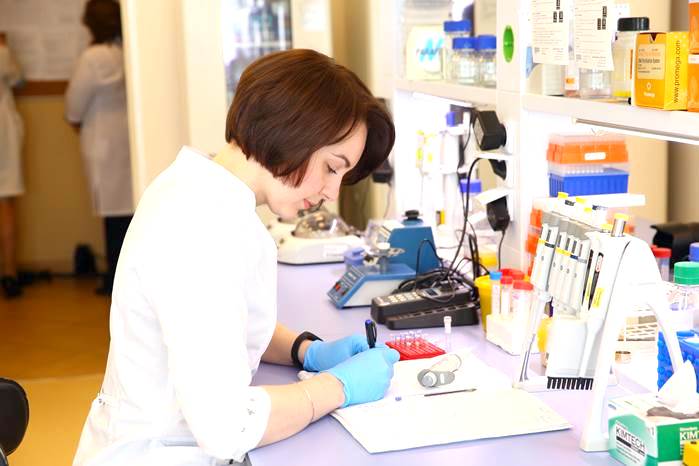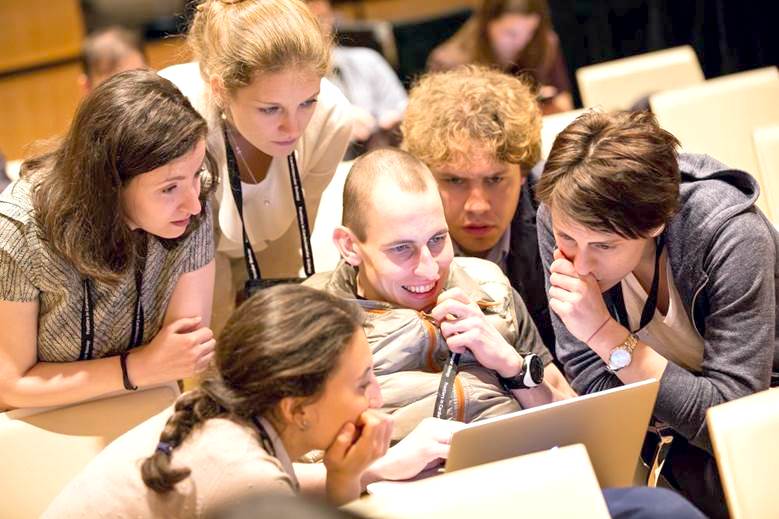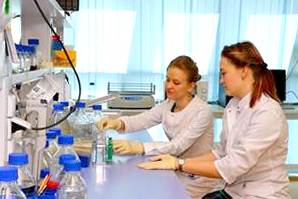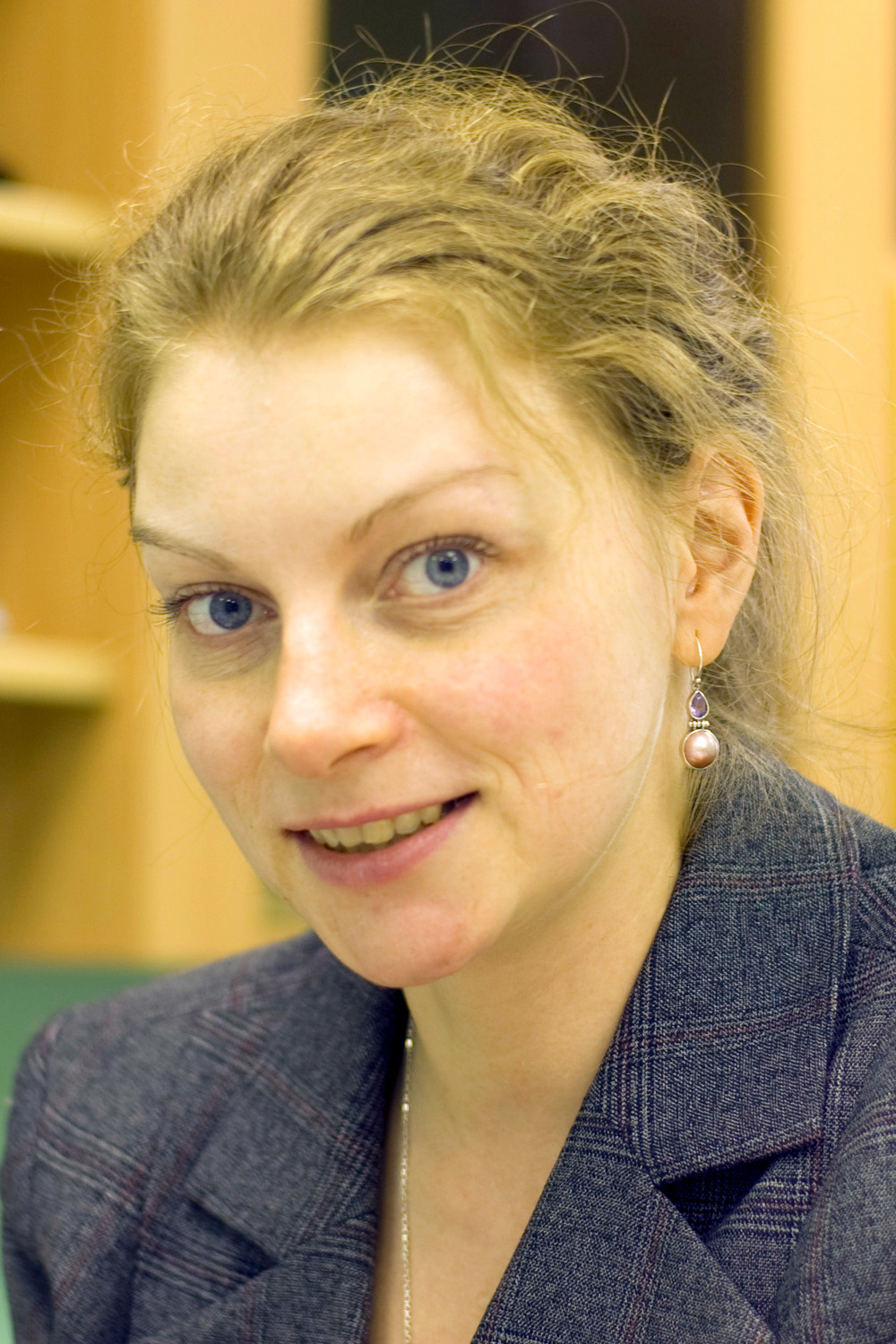Institute of Molecular Biology and Genetics



 Anna Kostareva, MD, PhD
Anna Kostareva, MD, PhDDirector of the Institute
Major focus
The Institute focuses on the study of the molecular and genetic mechanisms underlying the pathogenesis of cardiovascular diseases as well as on the development and improvement of diagnostic and treatment methods for CVD patients.
Major research areas:
- Molecular mechanisms of cardiomyopathies
- Molecular and cellular mechanisms of diseases of the aorta and great vessels
- Cell models for studying the pathogenesis of cardiovascular diseases based on induced pluripotent stem cells (iPSCs)
- Сell modeling of cardiomyocyte for studying the pathogenesis of cardiovascular diseases
- Tissue engineering of blood vessels and heart valves
- Molecular and genetic determinants of metabolic syndrome
- MicroRNA as biomarkers and regulators of myocardial cell fate
- Genetic factors of autoimmune diseases
Structure:
- Laboratory of Molecular Cardiology and Genetics
- Atherosclerosis Research Department
— Laboratory of Molecular and Cellular Mechanisms of Atherosclerosis
— Laboratory of Biochemistry - Cell Biology Group
- Laboratory of Infiltrative Heart Disease
— Amyloidosis Group - Cell Technology Group
- Gene and Cell Engineering Group
- Biochemistry Group
Projects
- Mechanism to activate the regenerative potential in cardiac mesenchymal cells
- Investigation of LMNA mutations effect on the electrophysiological properties of cardiomyocytes
- Investigation of the mechanisms underlying the processes of osteogenic differentiation of the cells
- Tissue-engineered biomaterials stimulating the regenerative potential of tissues due to improved spatial pattern and lower inflammatory response
- Extracellular vesicles as biomarkers and regulators of cardiovascular conditions
- Investigation of impaired function of skeletal muscle stem cells in chronic heart failure
- Study of developmental and metabolic disorders of skeletal muscles in laminopathies
- Cell modelling of skeletal muscle degeneration, search for therapeutic targets for the prevention and treatment of muscle degeneration
- Danio rerio as a model object to study cardiac channelopathies
- Regulation of the activity of voltage-gated ion channels by small G proteins
- Structural and functional characteristics of the cardiac isoform of sodium channels with amino acid substitutions associated with arrhythmogenic syndromes
Grants
- 17-04-01318; “Cellular mechanisms of the disease of the ascending aorta and aortic valve” (supervised by A.B. Malashicheva)
- 18-315-00177; “Study of the role of extracellular mitochondrial DNA and microRNA in the development of inflammation and fibro-fatty replacement of myocardium” (supervised by A.A. Khudyakov)
- 18-34-00277; “Notch-dependent mechanisms of intercellular interactions of endothelial and mesenchymal cells” (supervised by A.S. Kostina)
- 18-29-17074; “Nanofiber 3D scaffolds based on polysaccharides for tissue engineering” (supervised by Yu.A. Skorik)
- 18-315-20050; “Development of a method for studying the neurogenic regulation of the pulmonary circulation and pulmonary artery remodeling and substantiation of a new treatment method for pulmonary hypertension by selective effect on neural elements” (supervised by E.N. Mikhailov)
- 19-015-00313; “Mechanisms of lamin A involvement in stem cell differentiation” (supervised by A.A. Kostareva)
- 19-29-01066; “Methods for the analysis of big unstructured data to develop a system for prediction of the restoration of the integrative brain function and create treatment methods for a state of impaired consciousness – a combination of loss and new pathological integration” (supervised by E.A. Kondratyeva)
- 17-15-01292; “Structural and molecular mechanisms of dysfunctional Nav1.5 channel in the myocardium” (B.S. Zhorov, A.A. Kostareva)
- 17-75-30052; “Development of personalized therapy for obesity and type 2 diabetes mellitus to reduce cardiovascular risks” (E.V. Shlyakhto, A.Yu. Babenko)
- 18-14-00152; “Molecular and genetic mechanisms of cardiovascular calcification (supervised by A.B. Malashicheva)
- 16-15-10178; “Investigation of the mechanisms of impaired regeneration of skeletal muscles and pathological replacement of functional muscle tissue with adipose tissue” (R.I. Dmitrieva)
- 17-75-10125; “Investigation of the role of SYNM gene in the differentiation of mesenchymal stromal cells and the development of congenital anomalies” (supervised by A.M. Zlotina)
- 18-75-10042; “Study of predictors of postprandial glycemic response and the need for insulin therapy in women with gestational diabetes for personalized treatment approaches” (supervised by E.A. Pustozerov)
- 18-75-00006; “Study of the association of rare and truncating titin variants with the course of postinfarction myocardial remodeling” (supervised by A.M. Kiselev)
- 19-75-20076; “Molecular basis of the involvement of extracellular vesicle subpopulations in the development of a systemic inflammatory response initiated by damage to the elements of the cardiovascular system” (supervised by A.S. Golovkin)
- 19-75-00070; “Role of GSK3B kinase in remodeling of cardiomyocyte intercalated discs in health and disease” (supervised by A.A. Khudyakov)
- 075-15-2019-161; “Development of personalized treatment approaches for arterial hypertension based on molecular, genetic and cytokine markers, neurogenic effects, organ damage and metabolic disorders” (supervised by A.O. Konradi)
Titov A., Valiullina A., Zmievskaya E., Zaikova E., Petukhov A., Miftakhova R., Bulatov E., Rizvanov A. Advancing CAR T-Cell Therapy for Solid Tumors: Lessons Learned from Lymphoma Treatment. CANCERS. 2020; 12 (1): 125. IF 6,13.
Kondratov K., Nikitin Y., Fedorov A., Kostareva A., Mikhailovskii V., Isakov D., Ivanov A., Golovkin A. Heterogeneity of the nucleic acid repertoire of plasma extracellular vesicles demonstrated using high-sensitivity fluorescence-activated sorting. JOURNAL OF EXTRACELLULAR VESICLES. 2020; 9 (1): IF 15,00. IF 6,20.
Kudryavtseva V., Stankevich K., Kozelskaya A., Kibler E., Zhukov Y., Malashicheva A., Golovkin A., Mishanin A., Filimonov V., Bolbasov E., Tverdokhlebov S. Magnetron plasma mediated immobilization of hyaluronic acid for the development of functional double-sided biodegradable vascular graft. Applied Surface Science. 2020; DOI: 10.1016/j.apsusc. 2020.147196. IF 6,20.
Malashicheva A, Kostina A, Kostareva A, Irtyuga O, Gordeev M, Uspensky V. Notch signaling in the pathogenesis of thoracic aortic aneurysms: A bridge between embryonic and adult states. Biochimica et Biophysica Acta — Molecular Basis of Disease. 2020;1866 (3):165631. doi: 10.1016/j.bbadis.2019
Semenova D, Bogdanova M, Kostina A, Golovkin A, Kostareva A, Malashicheva A. Dose-dependent mechanism of Notch action in promoting osteogenic differentiation of mesenchymal stem cells. Cell and Tissue Reseach. 2020;379 (1):169-179. doi: 10.1007/s00441-019-03130-7
Smolina N, Khudiakov A, Knyazeva A, Zlotina A, Sukhareva K, Kondratov K, Gogvadze V, Zhivotovsky B, Sejersen T, Kostareva A. Desmin mutations result in mitochondrial dysfunction regardless of their aggregation properties. Biochim Biophys Acta Mol Basis Dis. 2020;1866 (6):165745. doi: 10.1016/j.bbadis.2020.165745
Barbitoff YA, Polev DE, Glotov AS, Serebryakova EA, Shcherbakova IV, Kiselev AM, Kostareva AA, Glotov OS, Predeus AV. Systematic dissection of biases in whole-exome and whole-genome sequencing reveals major determinants of coding sequence coverage. Sci Rep. 2020;10 (1):2057. doi: 10.1038/s41598-020-59026-y
Fedorov, A; Kondratov, K; Kishenko, V; Mikhailovskii, V; Kudryavtsev, I; Belyakova, M; Sidorkevich, S; Vavilova, T; Kostareva, A; Sirotkina, O; Golovkin, A. Application of high-sensitivity flow cytometry in combination with low-voltage scanning electron microscopy for characterization of nanosized objects during platelet concentrate storage. 2019; 31 (2): 226-235. DOI: 10.1080/09537104.2019.1599337.
Korkosh, VS; Kiselev, AM; Mikhaylov, EN; Kostareva, AA; Zhorov, BS. Atomic Mechanisms of Timothy Syndrome-Associated Mutations in Calcium Channel Cav1.2. FRONTIERS IN PHYSIOLOGY. 2019; 10: ID 335. DOI: 10.3389/fphys.2019.00335.
Zaytseva, AK; Karpushev, AV; Kiselev, AM; Mikhaylov, EN; Lebedev, DS; Zhorov, BS; Kostareva, AA. Characterization of a novel SCN5A genetic variant A1294G associated with mixed clinical phenotype. BIOCHEMICAL AND BIOPHYSICAL RESEARCH COMMUNICATIONS. 2019; 516 (3): 777-783. DOI: 10.1016/j.bbrc.2019.06.080.
Lelyavina, TA; Galenko, VL; Ivanova, OA; Komarova, MY; Ignatieva, EV; Bortsova, MA; Yukina, GY; Khromova, NV; Sitnikova, MY; Kostareva, AA; Sergushichev, A; Dmitrieva, RI. Clinical Response to Personalized Exercise Therapy in Heart Failure Patients with Reduced Ejection Fraction Is Accompanied by Skeletal Muscle Histological Alterations. INTERNATIONAL JOURNAL OF MOLECULAR SCIENCES. 2019; 20 (21): ID 5514 (эл.ресурс). DOI: 10.3390/ijms20215514.
Khudiakov, AA; Smolina, NA; Perepelina, KI; Malashicheva, AB; Kostareva, AA. Extracellular MicroRNAs and Mitochondrial DNA as Potential Biomarkers of Arrhythmogenic Cardiomyopathy. BIOCHEMISTRY-MOSCOW. 2019; 84 (3): 272-282. DOI: 10.1134/S000629791903009X.
Kostina, A; Semenova, D; Kostina, D; Uspensky, V; Kostareva, A; Malashicheva, A. Human aortic endothelial cells have osteogenic Notch-dependent properties in co-culture with aortic smooth muscle cells. BIOCHEMICAL AND BIOPHYSICAL RESEARCH COMMUNICATIONS. 2019; 514 (2): 462-468. DOI: 10.1016/j.bbrc.2019.04.177.
Contacts
Address: 18th floor, 2, Akkuratova st., St. Petersburg
Tel: + 7 (812) 702-37-77
